Monday, September 15
1B.1 Discharge Currents of Metallized Silicon Chiplets at Low Pre-Charge Voltages
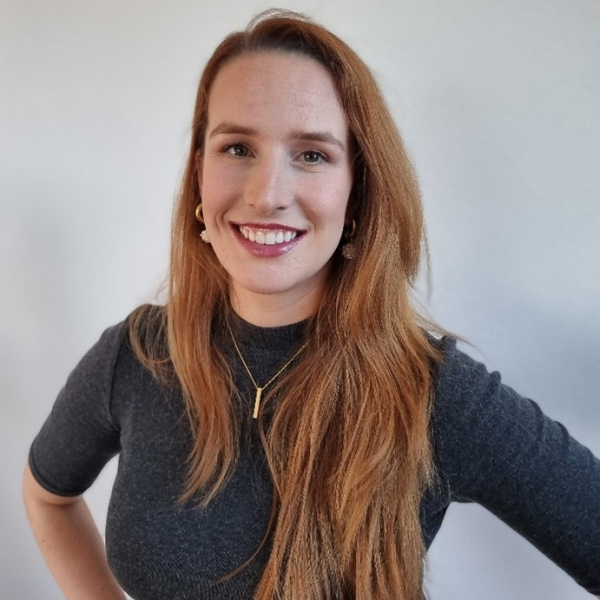
Ellen Merkel
Ellen Merkel joined the Analysis & Test group at Fraunhofer EMFT in 2018 and has been supporting the team in researching topics related to electrostatic discharges. She received her Bachelor's (2018) and Master's degree (2021) at the Technical University of Munich (TUM), Germany. Since then, she has worked as a research associate at Fraunhofer EMFT, specializing in ESD test methods, ESD robustness and protection, and simulations. In 2022, she started to work on her PhD with a focus on ESD risks in Multi-Chip Modules (MCM) and Systems in Package (SiP). Ellen is an active member of the ESD Association and joined the steering committee of the International ESD Workshop 2023 in Tutzing, Germany.
1B.2 Pulse After Power Down (PAPD) Latch-up Failures
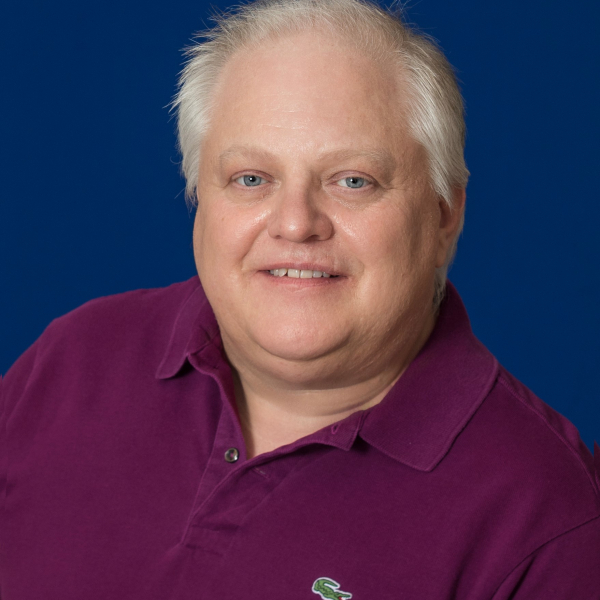
Scott Ward
Authors Corner 1B.1 & 1B.2

Ellen Merkel
Ellen Merkel joined the Analysis & Test group at Fraunhofer EMFT in 2018 and has been supporting the team in researching topics related to electrostatic discharges. She received her Bachelor's (2018) and Master's degree (2021) at the Technical University of Munich (TUM), Germany. Since then, she has worked as a research associate at Fraunhofer EMFT, specializing in ESD test methods, ESD robustness and protection, and simulations. In 2022, she started to work on her PhD with a focus on ESD risks in Multi-Chip Modules (MCM) and Systems in Package (SiP). Ellen is an active member of the ESD Association and joined the steering committee of the International ESD Workshop 2023 in Tutzing, Germany.

Scott Ward
M1.1 Power and Energy Distribution of Electrostatic Discharge on Material Measurements
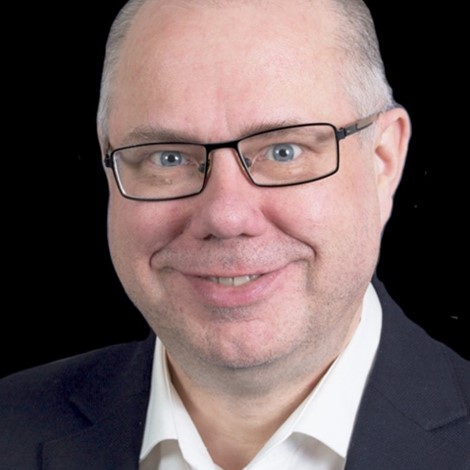
Toni Viheriäkoski
Toni Viheriäkoski established electrostatics laboratory services for Nokia in 2001. He received the INARTE ESD engineer certification in 2004. Since 2008, he has been working on electrostatic and ESD risk analysis in the healthcare, medical, electronics, automotive, and process industries at Cascade Metrology Oy. Toni has written more than 30 publications. He has been the chair of the Finnish STAHA Association since 2006 and the chair of the Finnish Standardization Committee SK101 since 2016. He received the specialist qualification in business management in 2018 and the 1906 award from IEC in 2019. He is a member of several IEC and ESDA working groups.
M1.2 Investigation of Bar Type AC Corona Discharge Ionizer for Suppression of Induced Voltage and Improvement of Static Elimination Capability
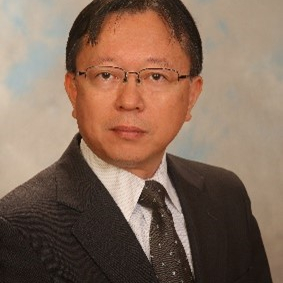
Shinichi Yamaguchi
Shinichi Yamaguchi has more than 37 years of experience in the static electricity industry, providing technical guidance on various static electricity measurements, countermeasures for static electricity problems, and proposals for the development of countermeasures and measuring instruments by ESD measuring instrument manufacturers and Ionizer manufacturers.
He has been involved in the ESD market in Japan for more than 33 years, and has conducted seminars and factory diagnoses at major semiconductor, electronic device, and LCD-related companies. He has also been active in the Asian market since 1998, and has conducted seminars and factory diagnoses for LCD, HDD, and semiconductor-related companies in the same way as in Japan.
Authors Corner M1.1 & M1.2

Toni Viheriäkoski
Toni Viheriäkoski established electrostatics laboratory services for Nokia in 2001. He received the INARTE ESD engineer certification in 2004. Since 2008, he has been working on electrostatic and ESD risk analysis in the healthcare, medical, electronics, automotive, and process industries at Cascade Metrology Oy. Toni has written more than 30 publications. He has been the chair of the Finnish STAHA Association since 2006 and the chair of the Finnish Standardization Committee SK101 since 2016. He received the specialist qualification in business management in 2018 and the 1906 award from IEC in 2019. He is a member of several IEC and ESDA working groups.

Shinichi Yamaguchi
Shinichi Yamaguchi has more than 37 years of experience in the static electricity industry, providing technical guidance on various static electricity measurements, countermeasures for static electricity problems, and proposals for the development of countermeasures and measuring instruments by ESD measuring instrument manufacturers and Ionizer manufacturers.
He has been involved in the ESD market in Japan for more than 33 years, and has conducted seminars and factory diagnoses at major semiconductor, electronic device, and LCD-related companies. He has also been active in the Asian market since 1998, and has conducted seminars and factory diagnoses for LCD, HDD, and semiconductor-related companies in the same way as in Japan.
Invited Talk - Answers to Solving Electrostatic Attraction (ESA) Technical Challenges – ESD Technical Report TR 28
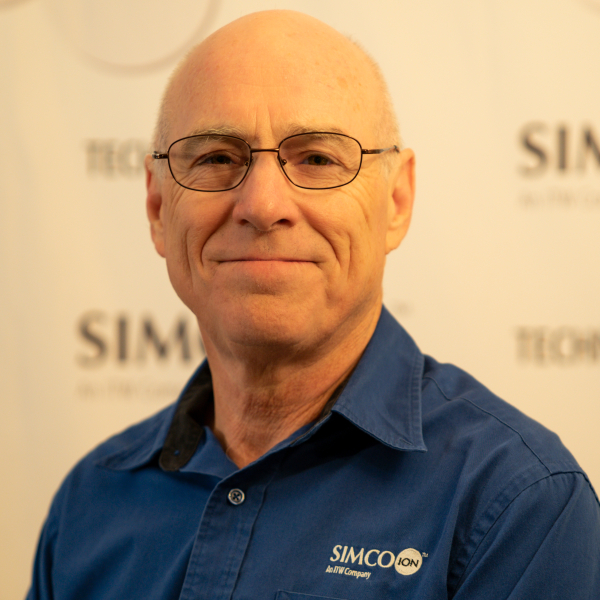
Carl Newberg
Carl Newberg is the manager of the Applications Engineering Team at Simco-Ion Technology, an ITW Company. Simco-Ion develops ionization solutions for high-technology semiconductor, electronics, and life science manufacturing. He has a B.S. degree in Metallurgical Engineering, an M.S. Degree in Materials Science, and a professional engineer’s license (Met. Eng.). He was among the first to test and receive certification from the ESDA as a Certified ESD Program Manager. He held positions as the ESD Program Manager for Western Digital Corporation and has been actively involved in the corporate ESD and contamination control programs at Seagate Technology and IBM Corporation. Carl has been a member of the ESD Association since 1995, actively participating as a board member, on many other major committees, and as a tutorial instructor. He is currently the ESD Association working group chairman of WG3 (Ionization) and WG28 (Electrostatic Attraction). He is co-author of "Contamination and ESD Control in High Technology Manufacturing", a book published by John Wiley & Sons.
M1.3 Reassessing Material Resistance Requirements for the Control of Charged Device Model-Like Discharges

Toni Viheriäkoski
Toni Viheriäkoski established electrostatics laboratory services for Nokia in 2001. He received the INARTE ESD engineer certification in 2004. Since 2008, he has been working on electrostatic and ESD risk analysis in the healthcare, medical, electronics, automotive, and process industries at Cascade Metrology Oy. Toni has written more than 30 publications. He has been the chair of the Finnish STAHA Association since 2006 and the chair of the Finnish Standardization Committee SK101 since 2016. He received the specialist qualification in business management in 2018 and the 1906 award from IEC in 2019. He is a member of several IEC and ESDA working groups.
M1.4 Measurement and Evaluation of Ionizers
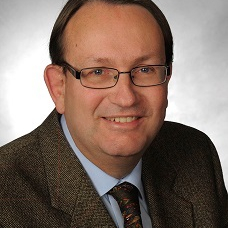
Wolfgang Stadler
Authors Corner M1.3 & M1.4

Wolfgang Stadler

Toni Viheriäkoski
Toni Viheriäkoski established electrostatics laboratory services for Nokia in 2001. He received the INARTE ESD engineer certification in 2004. Since 2008, he has been working on electrostatic and ESD risk analysis in the healthcare, medical, electronics, automotive, and process industries at Cascade Metrology Oy. Toni has written more than 30 publications. He has been the chair of the Finnish STAHA Association since 2006 and the chair of the Finnish Standardization Committee SK101 since 2016. He received the specialist qualification in business management in 2018 and the 1906 award from IEC in 2019. He is a member of several IEC and ESDA working groups.
Manufacturing Hands-On Intro Presentation - Ionization
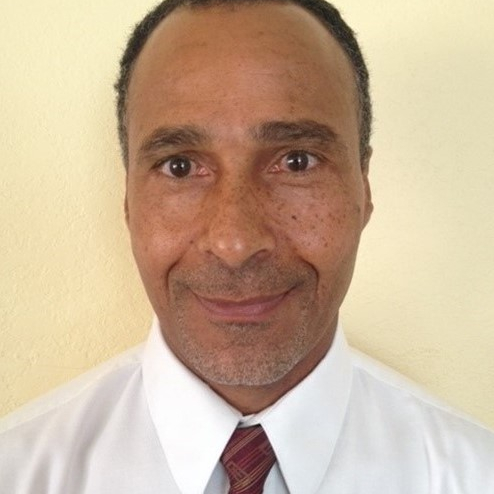
Iad Mirshad

Carl Newberg
Carl Newberg is the manager of the Applications Engineering Team at Simco-Ion Technology, an ITW Company. Simco-Ion develops ionization solutions for high-technology semiconductor, electronics, and life science manufacturing. He has a B.S. degree in Metallurgical Engineering, an M.S. Degree in Materials Science, and a professional engineer’s license (Met. Eng.). He was among the first to test and receive certification from the ESDA as a Certified ESD Program Manager. He held positions as the ESD Program Manager for Western Digital Corporation and has been actively involved in the corporate ESD and contamination control programs at Seagate Technology and IBM Corporation. Carl has been a member of the ESD Association since 1995, actively participating as a board member, on many other major committees, and as a tutorial instructor. He is currently the ESD Association working group chairman of WG3 (Ionization) and WG28 (Electrostatic Attraction). He is co-author of "Contamination and ESD Control in High Technology Manufacturing", a book published by John Wiley & Sons.
Manufacturing Hands-On Session - Ionization
Tuesday, September 16
Manufacturing Hands-On Intro Presentation - Packaging
Dale Parkin
Dale Parkin was the ESD Coordinator for Seagate Technology Twin Cities Operations located in Shakopee, MN; where has been employed since 2007. In addition to Dale’s Site Responsibilities, he led the Seagate Corporate ESD Material Test Laboratory. Dale led ESD audits at suppliers, sub-contractors, OEM, and business partners. Dale co-author on a Patent while at Seagate on Dynamic Body Voltage Testing. Previously Dale was employed at IBM, Rochester, MN. for 33 years, where he worked as Corporate Standards Project Authority for Electrostatic Discharge Protection. Dale has authored and co-numerous technical disclosures and papers while at IBM related to ESD Control. He has also co-authored several papers that have been presented at previous EOS/ESD Symposiums. Dale has been a member of the ESDA since 1984 and is an iNARTE Certified ESD Engineer. As a member of the ESDA, he has served as in many different positions, including Vice President and on the Board of Directors. Currently participates in several Committees; Standards, Human Resources, Nominations and Manufacturing Symposium Steering. Dale has volunteered many times over in several other ESDA facets; Workshop Chairman and Panel Lead, Volunteer Recognition Chairman, AV Chairman, Symposium Advisor and monitored many tutorials. Dale is currently the Standards Working Group Chairman for WG4 - Worksurfaces, WG9 – Footwear and WG97 – Footwear/Flooring Systems. He participates as a member of WG1 – Wrist Straps, WG2 - Garments, WG3 - Ionization, WG7 – Flooring, WG11 - Packaging, WG15 – Gloves, WG17 – Process Assessment, WG19 – High Reliability ESD Control Processes, WG20.20 – ESD Control Program , Standards Committee, Working Group Chairs, Nominations, Awards. In 2007, Dale was awarded the David Barber Sr. Memorial Award for his contribution to the development, organization, management, and growth of the EOS/ESD Symposium. In 2012, Dale was awarded the ESDA President Award in recognition of significant contributions, leadership and management that has enhanced EOS/ESD Association, Inc. operations and effectiveness in serving industry and the organization. In 2015, Dale was received the Volunteer Merit Award. The Volunteer Merit Award is to recognize the dedication, exemplary effort, and/or outstanding participation of an EOS/ESD Association, Inc. volunteer in regard to the development and promulgation of our organization’s activities and committee work with the nominations coming from volunteer peers. In 2017, Dale was awarded the Outstanding Contribution Award. The Outstanding Contributions Award is EOS/ESD Association, Inc.’s most prestigious award. It is awarded to an individual who has made a significant impact in the field of EOS/ESD through technical achievement or has made major contributions to either the development or the operation of EOS/ESD Association, Inc. In 2018, Dale was awarded the Joel Weidendorf Memorial Standards Award. The Joel Weidendorf Memorial Standards Award is presented to an individual who has made a significant contribution to the development of EOS/ESD Association, Inc. standards. He is a member of the North Central ESD Chapter. He has served as Past President, Vice President and Program Chairman. He is currently a member of the Chapter’s Board of Directors and is presently the Chapter’s National ESDA Delegate.

Wolfgang Stadler
Manufacturing Hands-on Session - Packaging
Emerging Technologies Workshop: ESD Challenges of 2.5D/3D Integration
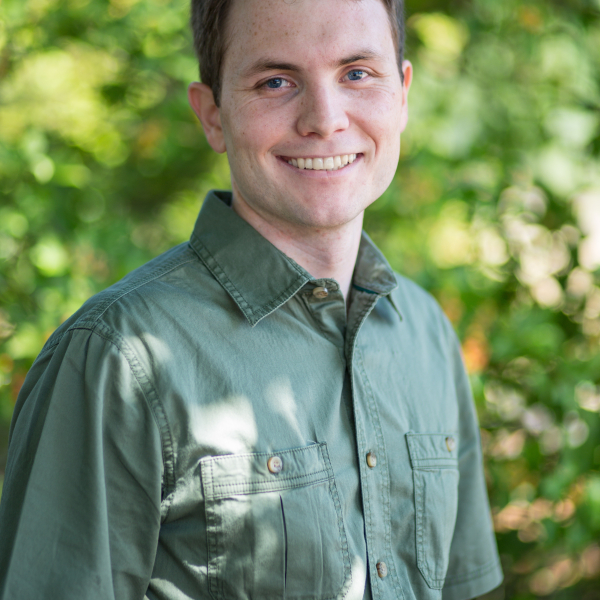
Benjamin Orr
Benjamin J. Orr was born in Seattle, Washington, in 1989. He received a B.S. in both electrical and computer engineering in 2011 and a Ph.D. in electrical engineering in 2016 from the Missouri University of Science and Technology. During his doctoral work which he completed three co-ops at Intel Mobile Communications in Munich Germany modeling ESD-induced soft failures.
Upon graduation, Benjamin returned home to the pacific northwest, joining the Intel Corporation in Hillsboro, OR as a process reliability ESD engineer. His research interests include optimization of ESD protection devices, novel ESD protection devices, and statistical characterization of process ESD performance.
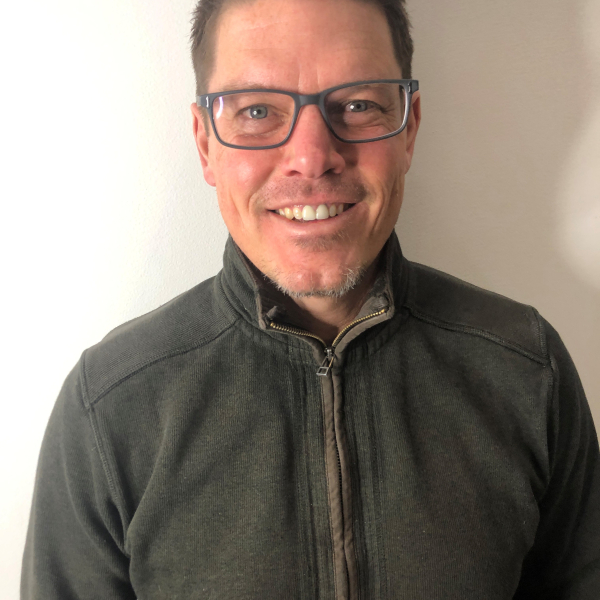
Scott Ruth
Scott Ruth joined AMD’s Circuit Technology group in 2019 as a staff engineer responsible for ESD protection design for advanced CMOS processes. Before joining AMD, he was with NXP Semiconductors working in various capacities in ESD, including design, qualification, and characterization. Scott has authored and co-authored papers at the EOS/ESD Symposium and delivered tutorials on latch-up for both the ESDA and IRPS. He has served on the technical program committee for the EOS/ESD Symposium, the IRPS, and the IEW. He has also contributed to ESDA WG18 and the JESD78 working groups. Scott received a B.S. degree in Physics from the University of California at Davis and an MSEE from the University of Colorado at Boulder.
2B.1 Novel Floating-p SCR-LDMOS Design for BCD Technology: Improving ESD Protection With High Holding Voltages and Fast Turn-on
Giacomo Drudi
Giacomo Drudi received the M.S. degree (cum laude) in Electrical Engineering from the University of Bologna, Italy, in 2024, with a thesis on numerical simulation of ESD protection devices, focusing on the effects of high-level injection and current filamentation in BCD technology. He is currently a Research Fellow in the Advanced Research Center on Electronic Systems (ARCES), University of Bologna, focusing on GaN HEMTs reliability numerical simulations.
2B.2 Protection Window Targeting Using NLDMOS-SCR with Active Gate Control
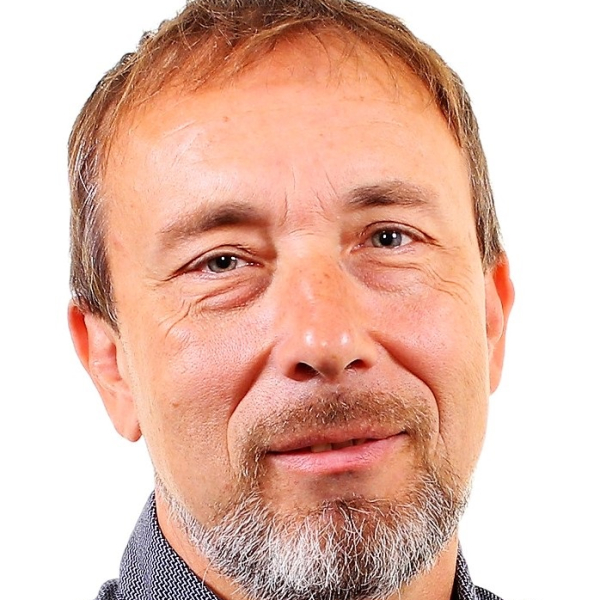
Vladislav Vashchenko
Dr. Vladislav Vashchenko has been the Sr. Director, Power ESD Group at Analog Devices Corp since 2011. He is responsible for aspects of power analog ESD/Latchup IC co-design business process and technology development. Previously, he managed ESD technology development at National Semiconductor (2000-2011). He received an MS Engineer-Physicist (1987), a Ph.D. in Physics of Semiconductors from MIPT (1990), and a "Doctor of Science in Microelectronics" habilitation degree (1997). He is the author of 150 U.S. patents, over 120 papers, and co-author of three books in the ESD field.
2B.3 High-Speed Interconnects to Enable Chiplet-Based AI Systems
Walker Turner
2B.1, 2B.2, & 2B.3 Authors Corner
Giacomo Drudi
Giacomo Drudi received the M.S. degree (cum laude) in Electrical Engineering from the University of Bologna, Italy, in 2024, with a thesis on numerical simulation of ESD protection devices, focusing on the effects of high-level injection and current filamentation in BCD technology. He is currently a Research Fellow in the Advanced Research Center on Electronic Systems (ARCES), University of Bologna, focusing on GaN HEMTs reliability numerical simulations.
Walker Turner

Vladislav Vashchenko
Dr. Vladislav Vashchenko has been the Sr. Director, Power ESD Group at Analog Devices Corp since 2011. He is responsible for aspects of power analog ESD/Latchup IC co-design business process and technology development. Previously, he managed ESD technology development at National Semiconductor (2000-2011). He received an MS Engineer-Physicist (1987), a Ph.D. in Physics of Semiconductors from MIPT (1990), and a "Doctor of Science in Microelectronics" habilitation degree (1997). He is the author of 150 U.S. patents, over 120 papers, and co-author of three books in the ESD field.
Wednesday, September 17
3B.1 On-Chip Probe for Real-Time Measurement of ESD Transients
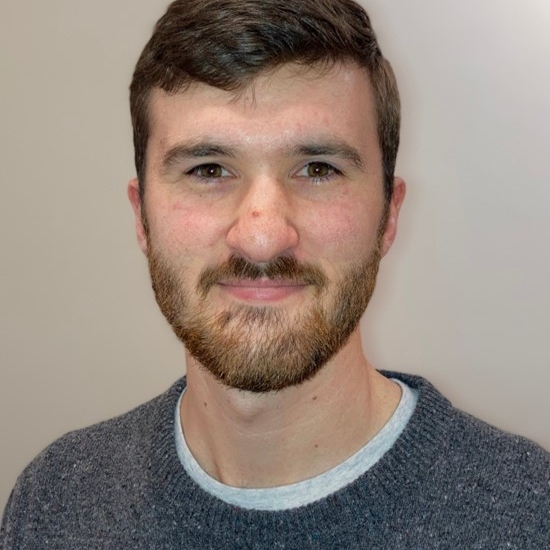
Matthew Drallmeier
Matthew Drallmeier received the B.S. degree in electrical engineering from the Missouri University of Science and Technology, Rolla, MO, USA, in 2021. He is currently pursuing the Ph.D. degree in electrical and computer engineering at the University of Illinois Urbana-Champaign, Urbana, IL, USA. His current research interests include analysis and simulation of charged device model ESD (CDM), ultra-short timescale gate oxide reliability, and high speed SERDES link design.
3B.2 On-Chip ESD Detection From Wafer Bulk Substrate Discharge
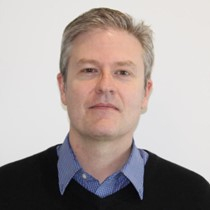
James Davis
James Davis received a B.S. degree in electrical engineering from Brigham Young University (Provo, Utah USA) in 2002. He has been involved with on-chip ESD protection at Micron Technology, Inc. (Boise, Idaho USA) for the past twenty years. He is currently part of the R&D group focusing on on-chip ESD protection and design for NAND flash products. Mr. Davis is currently a Senior Member Technical Staff ESD/Latchup engineer.
3B.3 Case Study of a Miscorrelation Between CDM Testing and CC-TLP Characterization of Multi-GHz RF Pins
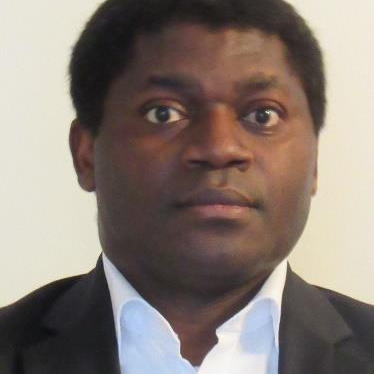
Dolphin Abessolo-Bidzo
Dolphin Abessolo-Bidzo received his Master of Science (M.Sc.) degree (2004) in Telecommunications Engineering and his Ph.D. (2007) in Electrical and Electronics Engineering from the ENSICAEN and from the University of Caen Normandie, France, respectively. He is currently working as Senior Principal Radio Frequency (RF) Electrostatic discharge (ESD) & Latch-Up Design Engineer for advanced RFCMOS and BiCMOS technologies of RF and Millimeter wave applications at NXP Semiconductors. Dolphin has published numerous articles and papers in the Institute of Electrical and Electronics Engineers (IEEE) scientific journals, symposia, and conferences on ESD, RF, and time domain analysis and he holds several patents in the field of ESD protection of integrated circuits (ICs). He is an active member of the ESD Association (ESDA) Workgroup-18 on Electronic Design Automation (EDA) for ESD. And for more than 15 years, he has regularly served in the management and the technical program committees of the International Electrostatic Discharge Workshops (IEW's), the Electrical Overstress/Electrostatic Discharge Symposia (EOS/ESD) and the IEEE International Reliability Physics Symposia (IRPS). Dolphin was the Management Committee General Chair of the IEW2023 in Germany and is Member of the ESDA Board of Directors since 2024.
3B.1, 3B.2, & 3B.3 Authors Corner

Dolphin Abessolo-Bidzo
Dolphin Abessolo-Bidzo received his Master of Science (M.Sc.) degree (2004) in Telecommunications Engineering and his Ph.D. (2007) in Electrical and Electronics Engineering from the ENSICAEN and from the University of Caen Normandie, France, respectively. He is currently working as Senior Principal Radio Frequency (RF) Electrostatic discharge (ESD) & Latch-Up Design Engineer for advanced RFCMOS and BiCMOS technologies of RF and Millimeter wave applications at NXP Semiconductors. Dolphin has published numerous articles and papers in the Institute of Electrical and Electronics Engineers (IEEE) scientific journals, symposia, and conferences on ESD, RF, and time domain analysis and he holds several patents in the field of ESD protection of integrated circuits (ICs). He is an active member of the ESD Association (ESDA) Workgroup-18 on Electronic Design Automation (EDA) for ESD. And for more than 15 years, he has regularly served in the management and the technical program committees of the International Electrostatic Discharge Workshops (IEW's), the Electrical Overstress/Electrostatic Discharge Symposia (EOS/ESD) and the IEEE International Reliability Physics Symposia (IRPS). Dolphin was the Management Committee General Chair of the IEW2023 in Germany and is Member of the ESDA Board of Directors since 2024.

James Davis
James Davis received a B.S. degree in electrical engineering from Brigham Young University (Provo, Utah USA) in 2002. He has been involved with on-chip ESD protection at Micron Technology, Inc. (Boise, Idaho USA) for the past twenty years. He is currently part of the R&D group focusing on on-chip ESD protection and design for NAND flash products. Mr. Davis is currently a Senior Member Technical Staff ESD/Latchup engineer.

Matthew Drallmeier
Matthew Drallmeier received the B.S. degree in electrical engineering from the Missouri University of Science and Technology, Rolla, MO, USA, in 2021. He is currently pursuing the Ph.D. degree in electrical and computer engineering at the University of Illinois Urbana-Champaign, Urbana, IL, USA. His current research interests include analysis and simulation of charged device model ESD (CDM), ultra-short timescale gate oxide reliability, and high speed SERDES link design.
Manufacturing Invited Talk - Electrostatic Discharge and Explosives: A Critical Safety Imperative Beyond S20.20
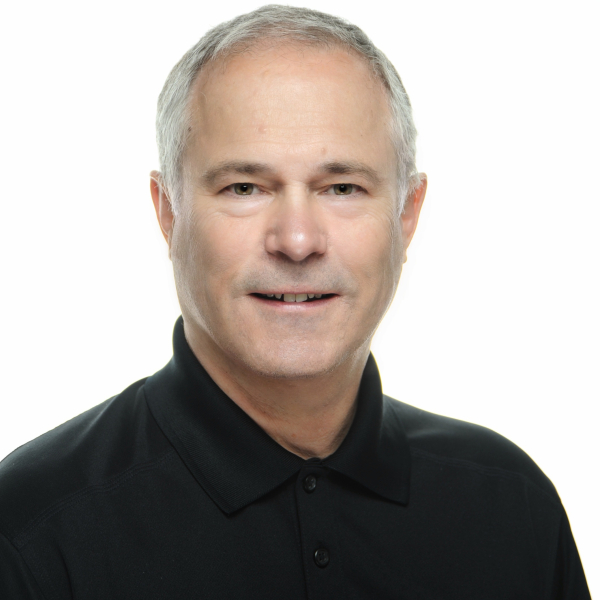
Jay Skolnik
Jay Skolnik is a licensed professional electrical engineer and is the co-founder and lead engineer/ consultant of Skolnik Technical Training in Albuquerque, NM. With over thirty years of experience in the electronics industry, Jay has developed a multitude of products utilized in different industries, including military, defense, avionics, aerospace, commercial, industrial, medical, automotive, and sports entertainment. As an ESDA certified program manager, Jay teaches ESD mitigation and control for the electronics and energetics specialties. He performs ESD audits to ensure factories and laboratories are following safe ESD control guidelines and procedures. He is also certified by iNARTE and is a certified professional instructor of national instruments (NI). He received his electrical engineering degree from the University of Missouri-Rolla.
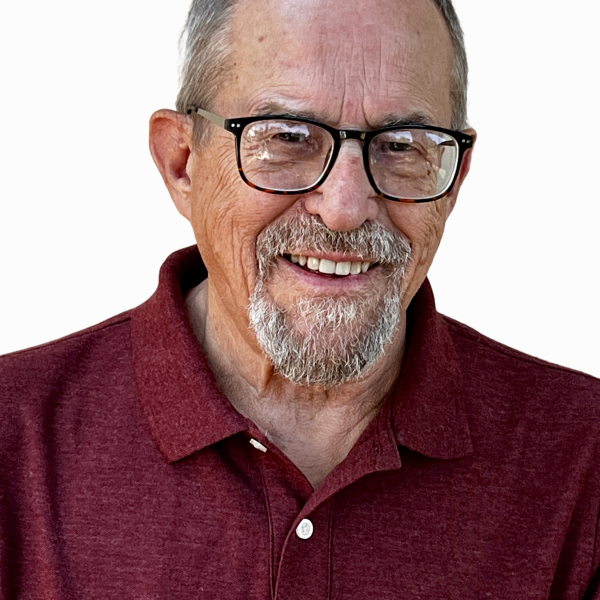
David E. Swenson
David E. Swenson retired in 2003 after 35 years of service from 3M. While at 3M he had responsibility for new packaging material development and application, training of 3M personnel worldwide and providing application assistance to users of static control products globally with particular emphasis on Asia Pacific and Japan. Dave and his wife Geri established a new company, Affinity Static Control Consulting, L.L.C .in 2003. Dave has been a member of the ESD Association since 1984 and has served in many capacities including 1997 Symposium General Chair and president of the Association in 1998 and 1999 and again in 2008 and 2009. He was re-elected to the Board of Directors for a 5th term from 2014 to 2016 and is currently appointed to the Board to assist with technical inquiries. Dave was presented with the highest award of the ESD Association, the “Outstanding Contributions Award” in 2002, the Standards Committee “Joel P. Weidendorf Memorial Award” in 2004, the Association “Edward G. Weggeland” Memorial Award in 2014 and the Symposium Committee’s, David Barber, Sr. Memorial award in 2018. He is a member of the Standards Committee serving several Working Groups and the ANSI/ESD S20.20 Standard Task Team. Dave also serves as Treasurer and Information Liaison of the Texas Chapter of the ESD Association; he is a member of the Electrostatic Society of America, IMAPS, the UK Institute of Physics and is a US Expert to IEC TC101, Electrostatics.
Manufacturing Workshop: ANSI/ESD S20.20 and TR53 Review: Community Feedback and Discussion
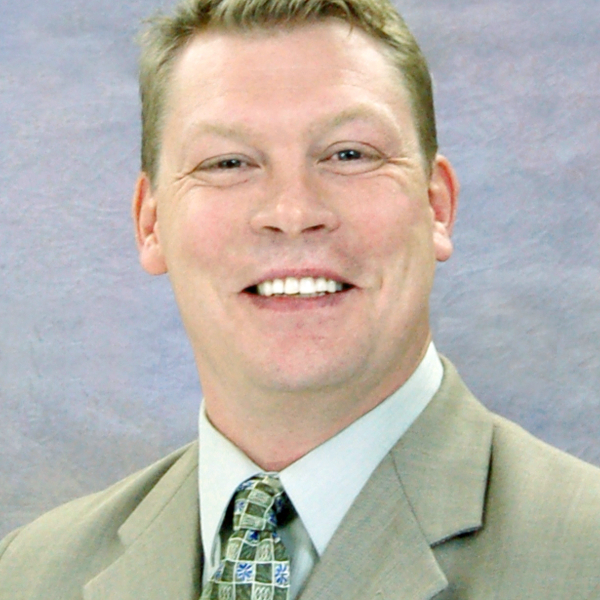
Kevin Duncan
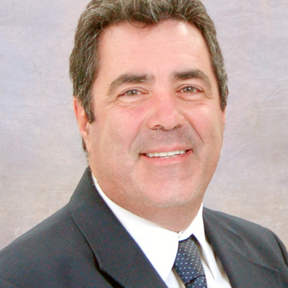
John Kinnear
John graduated from the University of Buffalo with a BS in Electrical Engineering and a master’s in electrical engineering from Syracuse University. John was hired by IBM, where he worked for 46 years. As part of his role, John was IBM's Subject Matter Expert in ESD control. This included developing and implementing ESD control processes at all the IBM manufacturing sites and assessing IBM’s suppliers for ESD control. The processes included wafer fab to large servers with all the processes required in between.
John has been a part of the ESD Association for over 30 years. He is currently chair of Working Group 20, which is responsible for ANSI/ESD S20.20, Development of an Electrostatic Discharge Control Program. John is also a member of various other standards working groups. He is also a founding member of the Technical Advisory Support Committee (TAS), which oversees all the standards of the ESD Association. John holds the position of Sr. Technical Director for EOS/ESD Association, Inc. John is the chair of the International Electrotechnical Commission (IEC) Technical Committee 101 on electrostatics. John is also the project leader for IEC 61340-5-1 – Electrostatic Discharge Control Program. Before becoming the chair, John was the chief delegate for the United States.
John’s accomplishments include several patents, Certified ESD Program Manager, Certified iNARTE ESD Engineer, Reliability Center of Japan – Chief ESD Coordinator, Outstanding Contribution Award (ESD Association), Outstanding Technical Achievement Award (IBM), 1906 Award (IEC), and many more.
Invited Talk: Dispositioning ESD Non-Conformances for High Reliability Assemblies
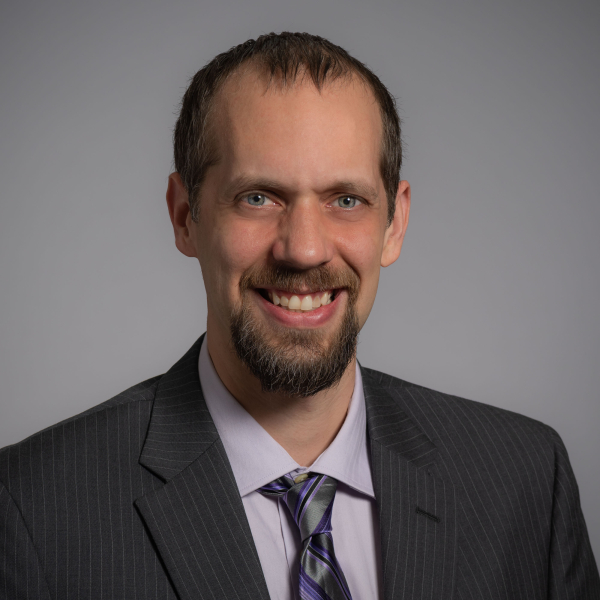
Devin Hart
Devin serves as the ESD Technical Lead and ESD SME at Honeywell FM&T. He is passionate about ensuring the workforce is properly trained to handle ESDS product. He created multiple e-learning and hands-on training courses focused on ESD, soldering processes, and electrical/mechanical assembly. Focusing on improving efficiency, he has built several software tools to help mistake-proof and automate tasks, such as the ESD preventative maintenance check process and database. Supporting high reliability product, Devin is developing several innovative solutions to mitigate ESD risk and mistake-proof ESD processes. He created a structured process and trained up a team to evaluate ESD non-conformances in the production environment. Devin enjoys being a member of several ESD Association working groups and task teams. He graduated from Missouri Western State University with a BS in Manufacturing Engineering Technology and an MAS in Engineering Technology Management. Outside of work, Devin enjoys wood working, traveling, being active in his church, and being a husband and a father.
M2.1 Advanced ESD Event Detection System Using M.L. Method
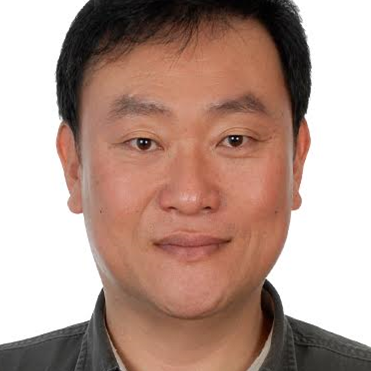
Byung Hoon Moon
B. H. Moon received MS degree in Solid state Physics from KyungHee university in 1995. Worked in Amkor assembly material and process R&D, Fairchild and Intel subcon assembly operation. Currently working in Micron PCS team for IOT and ESD detection development.
M2.2 Detection of Fast ESD Events with Antennas

Lena Zeitlhoefler
Lena Zeitlhoefler received her Master's degree in Electrical Engineering in 2017 from the Technical University of Munich (TUM). During her time as a Ph.D. student at the TUM, she worked in cooperation with Infineon Technologies AG in the fields of ESD and, particularly, on the physics of CDM and CDM simulation. She joined the ESD-Team of Infineon in Munich, Germany, full-time in September 2021.
M2.1 & M2.2 Authors Corner

Byung Hoon Moon
B. H. Moon received MS degree in Solid state Physics from KyungHee university in 1995. Worked in Amkor assembly material and process R&D, Fairchild and Intel subcon assembly operation. Currently working in Micron PCS team for IOT and ESD detection development.

Lena Zeitlhoefler
Lena Zeitlhoefler received her Master's degree in Electrical Engineering in 2017 from the Technical University of Munich (TUM). During her time as a Ph.D. student at the TUM, she worked in cooperation with Infineon Technologies AG in the fields of ESD and, particularly, on the physics of CDM and CDM simulation. She joined the ESD-Team of Infineon in Munich, Germany, full-time in September 2021.